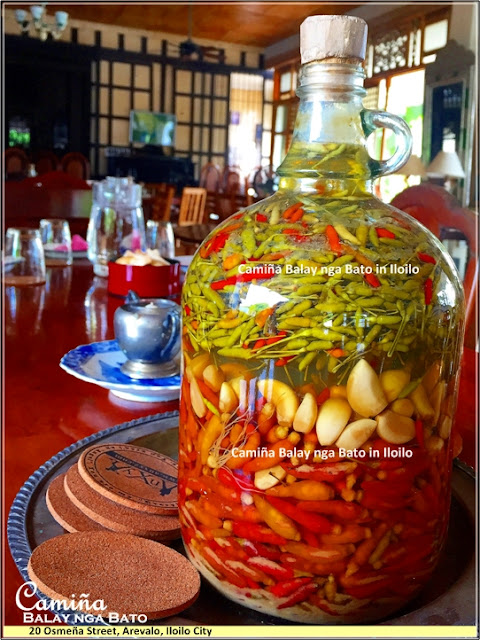Be it chicken inasal or grilled pork chop to seafoods especially talaba, a spiced vinegar is the perfect dip to further one's appetite. While every region in the Philippines has it's own version of a spiced vinegar and a name for it, when in Western Visayas especially - just look for SINAMAK.
But one need not to look far as it can found almost anywhere for it is a staple dip in almost every household and native restaurants.
It basically sits on the center table in most dining places and you can't miss it!
But one need not to look far as it can found almost anywhere for it is a staple dip in almost every household and native restaurants.
It basically sits on the center table in most dining places and you can't miss it!
The recipe varies from each household and the percentage of the "ingredients" too but always present are siling labuyo (green and red for color variation and makes it more visually appetizing), ginger (locals used langkawas or galangal but regular ginger will do) and garlic.
How to make Sinamak
Ingredients
2-3 cups native (coconut) vinegar (adjust according to bottle size) 1 cup siling labuyo 1/2 cup ginger, sliced 1 head garlic, peeled Whole peppercorns, onion - optional
Procedure:
- Fill a glass bottle with ginger, garlic,and chili.
- Pour in vinegar then tightly cover the bottle.
- Store for at least 3 days - the longer the the spicier the vinegar will become.
- Serve as sawsawan for pinirito and sinugba seafoods and meat dishes.
The measurements are just guides as you can create your own concoction. Or if you have no time, you can just buy one at the Iloilo Central Market. But if you bringing one as pasalubong, get one that has NO vinegar in it for those with vinegar will be confiscated at the airport.



